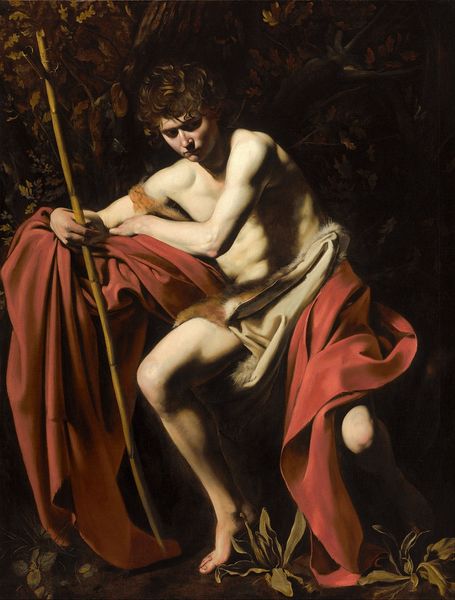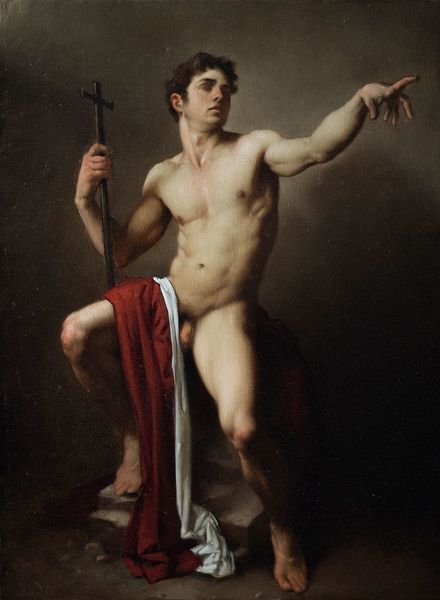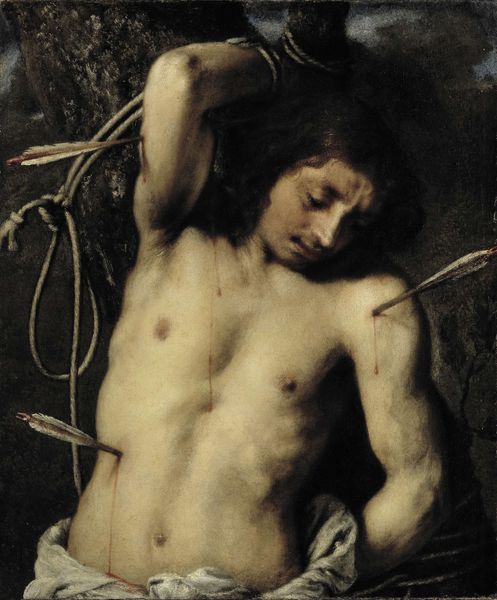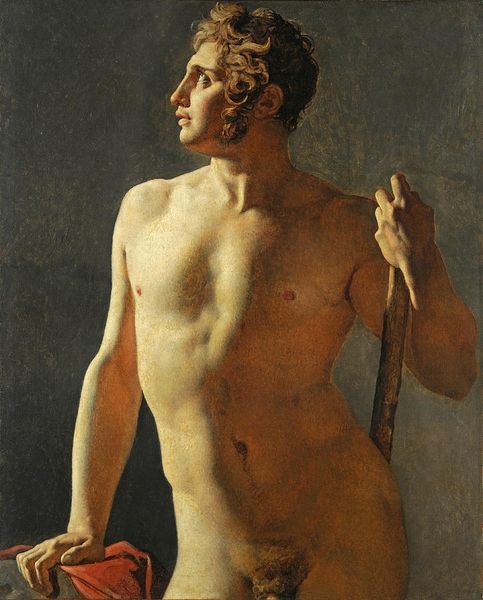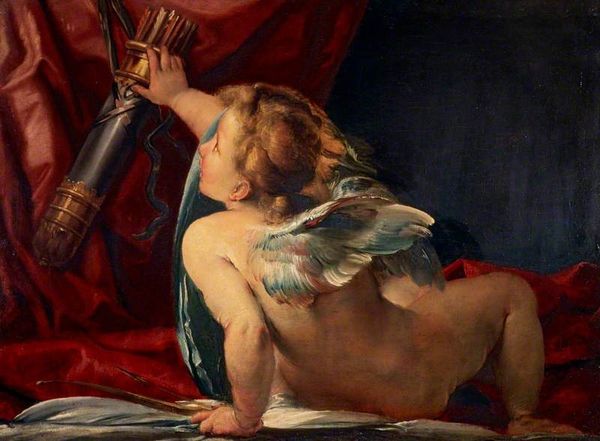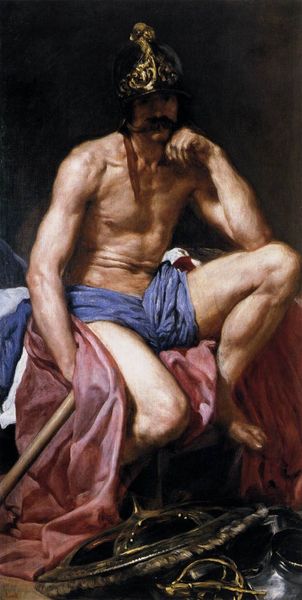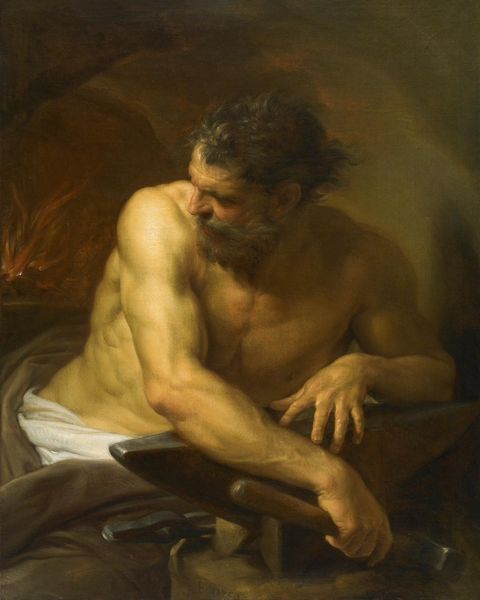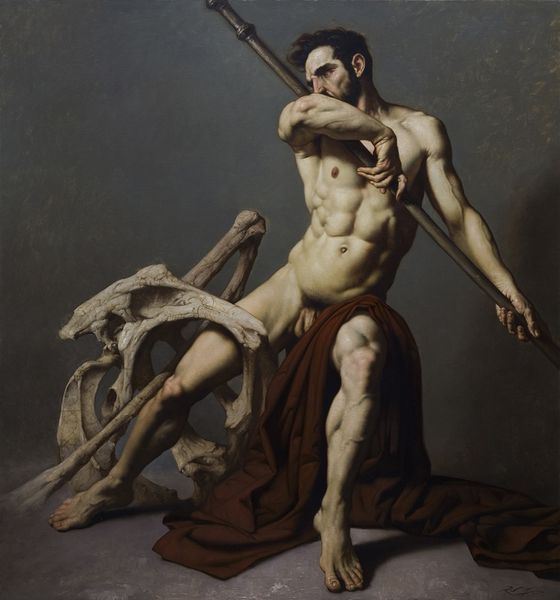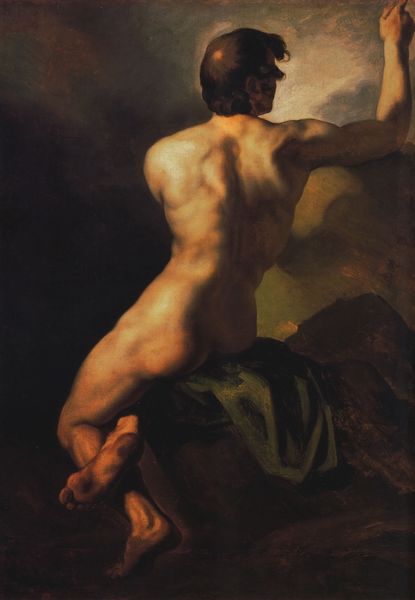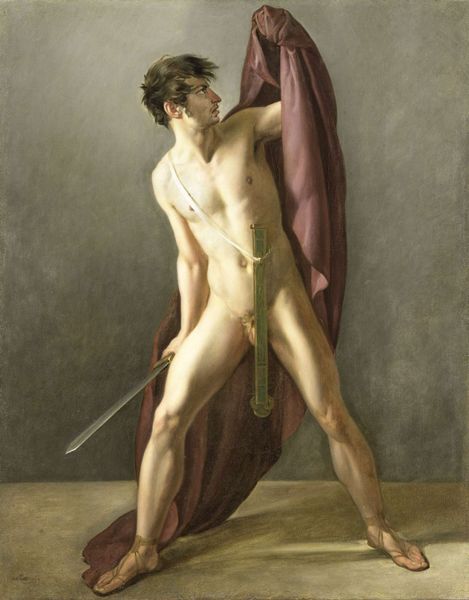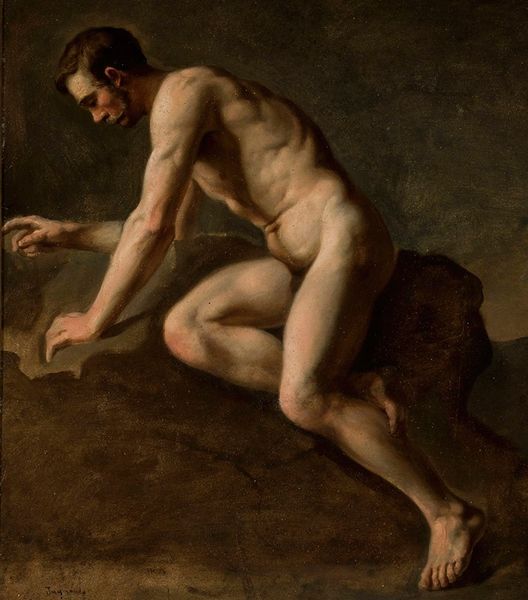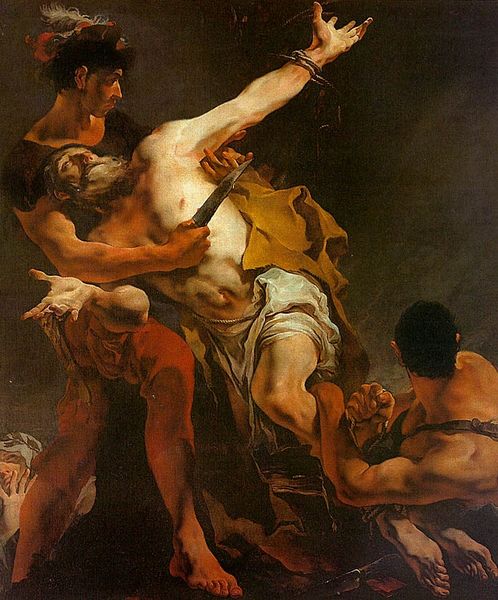
oil-paint
#
portrait
#
figurative
#
neoclacissism
#
oil-paint
#
oil painting
#
history-painting
#
academic-art
#
nude
#
portrait art
Copyright: Public Domain: Artvee
Editor: Here we have Ingres' "Academic study of a nude man" from 1801, created with oil paint. It’s striking how unfinished it appears. The face and torso are meticulously rendered, yet the background fades into near nothingness. What jumps out at you when you see it? Curator: I notice the means of production. The canvas itself is almost aggressively present. Its rough texture clashes with the idealized form, forcing us to consider the labor inherent in its making. Ingres is inviting a very interesting dialogue between traditional academic methods and the sheer physicality of art production. Editor: So you’re saying the contrast between the raw canvas and the refined figure is intentional? Curator: Precisely. He is drawing our attention to the artist's studio itself. Look closely; do you see any evidence of underdrawing? Editor: Barely. It’s as if the artist wants us to believe in the perfection of the form. But there is the sketchiness of the garment around his torso. Curator: It points towards a performative aspect within the tradition. It's about more than the illusion of reality; it is about demonstrating a command over materials, methods, and accepted modes of representation. Ingres is displaying skill but also alluding to the immense labor involved in the seemingly effortless Neoclassical aesthetic. He gives us both the figure, and how he arrived at it. Editor: I never considered it that way before. I thought the incompleteness was a flaw. Curator: I think it is a strength. Consider the social context. A "study" has specific meanings beyond the image itself. By making the usually unseen seen, he raises art as labor to be equal of his artistic vision. Editor: I can see now it encourages the viewer to become aware of its social and historical place, instead of just seeing an attractive figure. Thanks.
Comments
No comments
Be the first to comment and join the conversation on the ultimate creative platform.

